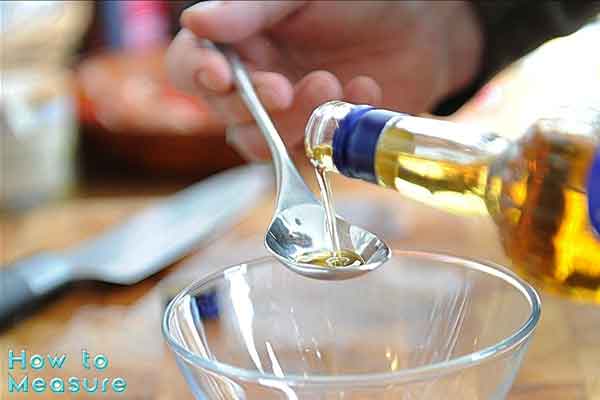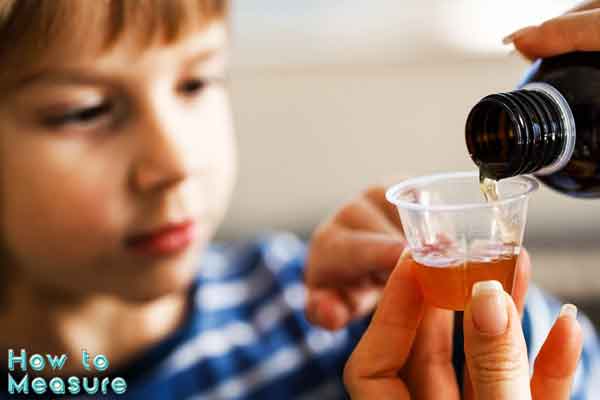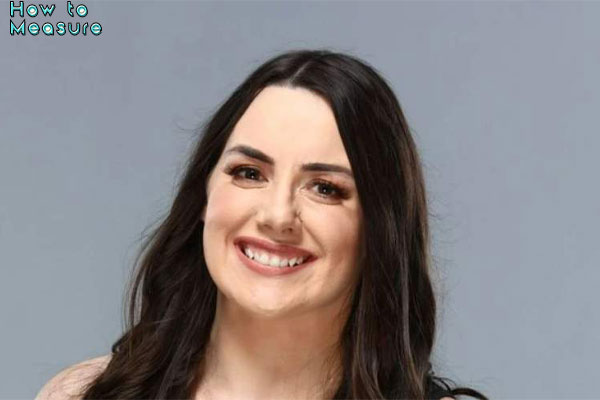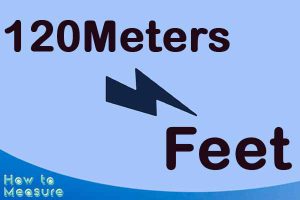Measuring out precise quantities of liquid is common in many different settings, from cooking and baking to scientific experiments and medical procedures. One common measurement used in these contexts is the milliliter, a unit of volume equal to one-thousandth of a liter. To accurately measure 5 milliliters of liquid, it is important to have the right tools and follow a few simple steps. Whether you are a professional chef, a laboratory technician, or someone who wants to ensure accurate measurements in your daily life, learning to measure 5 milliliters can be a valuable skill.
What is the best tool to measure 5 milliliters?
The best tool to measure 5 milliliters will depend on the user’s specific needs and the liquid being measured. Here are some common tools that can be used to measure 5 milliliters:
- Graduated cylinder: A graduated cylinder is a tall, narrow container used to measure the volume of liquids. It is often used in laboratory settings and has markings along the side to indicate the volume of liquid inside.
- Measuring spoon: A small spoon with a specified volume, often used in cooking and baking. Depending on the set, a measuring spoon may have a 5-milliliter spoon.
- Syringe: A syringe is a tool used to measure and administer liquid medications or injections. Syringes can be precise and accurate in measuring out small amounts of liquid.
- Pipette: A pipette is a laboratory tool used to measure and transfer small volumes of liquid. It is commonly used in chemistry, biology, and medical laboratories.
- Digital scale: A digital scale can be used to measure a liquid’s weight, then convert it to volume using a conversion chart or calculator.
Ultimately, the best tool to measure 5 milliliters will depend on the specific requirements of the task, the accuracy needed, and the availability of tools.

How to measure 5 milliliters without a measuring cup?
There are several ways to measure 5 milliliters of liquid without a measuring cup. Here are a few methods:
Using a teaspoon: One teaspoon is equal to approximately 5 milliliters. If you have a teaspoon, you can measure 5 milliliters of liquid.
Using a syringe: A syringe is a precise tool for measuring liquids. Draw up 5 milliliters of liquid into the syringe and then transfer it to the container you need to use.
Using a pipette: A pipette is another precise tool that can be used to measure small amounts of liquid. Insert 5 milliliters of liquid into the pipette and then transfer it to the container.
Using a digital scale: If you have a digital scale, you can weigh 5 grams of liquid and convert it to milliliters using a conversion chart or calculator.
Using a water displacement method: Fill a container with water to a known level, then add the liquid you want to measure until the water level reaches a new known level. The difference in volume is the volume of the liquid added.
It’s important to note that these methods may not be as precise as using a measuring cup or graduated cylinder, but they can be helpful in a pinch.
How to convert other units to 5 milliliters?
Converting other units to 5 milliliters depends on the unit of measurement you are starting with. Here are some common conversions to help you convert to 5 milliliters:
- Teaspoons: One teaspoon is equivalent to approximately 5 milliliters. Therefore, 5 milliliters is equal to 1 teaspoon.
- Tablespoons: One tablespoon is equivalent to approximately 15 milliliters. Therefore, 5 milliliters is equal to 1/3 of a tablespoon.
- Fluid ounces: One fluid ounce is equivalent to approximately 29.57 milliliters. Therefore, 5 milliliters is equal to approximately 0.17 fluid ounces.
- Milligrams: Milligrams are a unit of mass, not volume. The conversion of milligrams to milliliters depends on the density of the liquid being measured. For example, 5 milligrams of water equals approximately 0.005 milliliters, while 5 milligrams of olive oil equals approximately 0.006 milliliters.
- Liters: One liter is equivalent to 1,000 milliliters. Therefore, 5 milliliters is equal to 0.005 liters.
It’s important to note that conversions may vary depending on the specific liquid being measured and the units used. Using a conversion chart or calculator can help ensure accurate conversions.
What is the equivalent measurement of 5 milliliters in teaspoons or tablespoons?
Five milliliters is equivalent to 1 teaspoon of liquid. It is also equal to approximately 0.33 tablespoons, one-third of a tablespoon. Here are some other common conversions:
- 1 teaspoon = 5 milliliters
- 1 tablespoon = 15 milliliters
- 2 teaspoons = 1 tablespoon = 10 milliliters
- 3 teaspoons = 1 tablespoon = 15 milliliters
It’s important to note that these conversions may vary slightly depending on the specific liquid being measured and the measurement tools used. Precise measuring tools, such as graduated cylinders or spoons, can help ensure accurate measurements.
How to measure 5 milliliters of a thick or viscous liquid?
Measuring thick or viscous liquids like honey or syrup is more challenging than measuring thin liquids. Here are a few methods for measuring 5 milliliters of a thick or viscous liquid:
- Use a measuring spoon: A measuring spoon with a 5 milliliter capacity can scoop out the required amount of the thick liquid. Remember that the thick liquid may not level off as easily as a thin liquid, so it’s important to ensure that the measurement is accurate.
- Use a syringe: A syringe can accurately measure the amount of a thick liquid. Draw up the liquid into the syringe and then transfer it to the container you need to use.
- Warm the liquid: If the thick liquid is warm, it may become more fluid and easier to measure. However, be sure not to overheat the liquid, as this could change its properties or make it unsafe to consume.
- Weigh the liquid: If you have a kitchen scale that measures in grams, you can weigh 5 grams of the thick liquid and then convert it to milliliters using a conversion chart or calculator.
- Use a water displacement method: Fill a container with water to a known level, then add the thick liquid you want to measure until the water level reaches a new known level. The difference in volume is the volume of the thick liquid added.
It’s important to note that when measuring thick or viscous liquids, the tool should be cleaned immediately after use to prevent the liquid from hardening and making it difficult to clean.

How to measure 5 milliliters of medication for children?
Measuring medication for children can be challenging, especially when dealing with small volumes like 5 milliliters. Here are some tips to help you measure 5 milliliters of medication for children:
- Use a syringe or dropper: These tools are designed to measure small volumes accurately and can be particularly useful for measuring medication for children. Be sure to select a syringe or dropper with a capacity of at least 5 milliliters, and read the markings on the tool carefully to ensure that you measure the correct amount.
- Use a calibrated measuring spoon: If you don’t have a syringe or dropper, use a calibrated measuring spoon to measure the medication. Use a spoon that is calibrated to measure milliliters, and check that the spoon has a 5 milliliter capacity.
- Ask your pharmacist for assistance: If you are uncertain how to measure the medication or have any questions about dosage or administration, your pharmacist can be an excellent resource. They can provide you with guidance on how to measure the medication accurately, and they can also answer any questions you may have about the medication.
- Please read the instructions carefully: Always read the instructions with the medication carefully, and follow them closely. The instructions should specify the correct dosage for your child’s age and weight and may also guide how to measure the medication.
Always consult with a healthcare provider, such as a pediatrician or pharmacist, before giving any medication to a child, as they can provide you with additional guidance and advice.
How to read a measuring tool to measure 5 milliliters?
To read a measuring tool to measure 5 milliliters, you first need to identify the type of tool you are using. Several types of measuring tools can be used to measure liquids, including graduated cylinders, syringes, and measuring spoons. Here are some tips for reading each type of tool to measure 5 milliliters:
Graduated cylinder:
- Place the graduated cylinder on a level surface and pour the liquid into the cylinder.
- Check the level of the liquid on the graduated cylinder.
- Read the measurement at the bottom of the meniscus (the curved surface of the liquid in the cylinder).
- If the liquid is at the 5 milliliter mark, you have measured 5 milliliters of liquid.
Syringe:
- Draw the liquid up into the syringe to the 5 milliliter mark.
- Hold the syringe at eye level and check the measurement on the syringe barrel.
- Ensure the plunger’s bottom lines up with the 5 milliliter mark on the syringe barrel.
- If the liquid is at the 5-milliliter mark, you have measured 5 milliliters.
Measuring spoon:
- Place the measuring spoon on a level surface.
- Pour the liquid into the spoon until it reaches the rim.
- Hold the spoon at eye level and check the measurement on the spoon.
- If the liquid is at the 5-milliliter mark, you have measured 5 milliliters.
Remember to use the appropriate measuring tool for the liquid you are measuring, and always read the markings carefully to ensure an accurate measurement.
Conclusion
In conclusion, measuring 5 milliliters of liquid accurately can be achieved using various methods and tools, including measuring cups, syringes, droppers, and calibrated spoons. When measuring 5 milliliters, using the appropriate tool and reading the markings carefully is important to ensure an accurate measurement. Additionally, when administering medication to children, it is important to seek guidance from healthcare professionals and follow dosage instructions carefully. With these tips and techniques, measuring 5 milliliters of liquid can be done accurately and efficiently.











